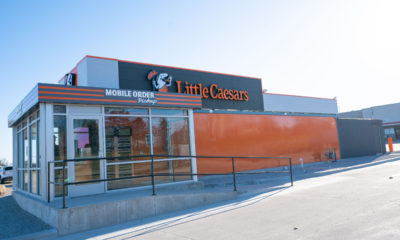I had a moment to reflect on the ever-changing nature of retailing recently when I read about Toys “R” Us teetering on bankruptcy. And about Best Buy trying to explain what happened to shareholders and analysts (and not just about the misbehaving ceo).
Is it really so long ago that “category killers” were the new best thing? Remember that inelegant description of big-box juggernauts, selling only one sector of merchandise, carrying the widest, deepest breadth of goods any consumer would want?
They were the anti-department store in their narrow focus, the anti-mass merchant in their selection, the anti-neighborhood mom-and-pop in their pricing.
Who was first? Was it Toys “R” Us selling only toys? Best Buy selling only consumer electronics? Or was it Barnes & Noble selling only books, or Sports Authority selling only sporting goods, or Home Depot selling only home-improvement stuff, or Linens N Things selling only home goods or CompUSA selling only computer equipment?
They pioneered the big footprint. They instituted “stack-em-high-and-let-em-fly.” They gave a new energy to the tired old strip mall. And then . . .
There’s always an “and then . . .” because retailing never stops evolving. So then came Walmart, which created 200,000 square feet of individual category killers. It couldn’t match Toys “R” Us’ depth of merchandise, but it was brilliant at carrying the toys shoppers wanted. Its prices were more than competitive. And now the shopper could do all her shopping without moving her car.
Advertisement
Suddenly, pushing a cart around 100,000 square feet of aisles to find that one item seemed laborious and unnecessary.
One by one, Walmart picked off these one-note superstores. It was now Walmart’s doors that burst open on the Friday after Thanksgiving.
Of course, you can’t blame only Walmart for this. Also blame Amazon. In the 1980s, and even early ’90s, nobody could have anticipated the phenomenon of online retailing.
The problem, though, was not so much how changes and technology affected these retailers, or how they could have anticipated them. It’s how they adjusted to the new world order. They’d gotten so big and so ingrained they had trouble turning their ships around. They simply didn’t know what to do.
They tried to refine their approach, forgetting that their approach had originally been an invention, not a refinement. They’d thought out-of-the-box once, but couldn’t seem to do it again.
It’s why retailing, and store designers, should never rest on their assumptions. All those assumptions will almost certainly get overturned by the next big trend. And it’s coming! Watch out, Amazon.
Advertisement

 Headlines1 week ago
Headlines1 week ago
 Headlines1 week ago
Headlines1 week ago
 Headlines1 week ago
Headlines1 week ago
 Designer Dozen2 weeks ago
Designer Dozen2 weeks ago
 Headlines6 days ago
Headlines6 days ago
 Headlines2 weeks ago
Headlines2 weeks ago
 Designer Dozen6 days ago
Designer Dozen6 days ago














